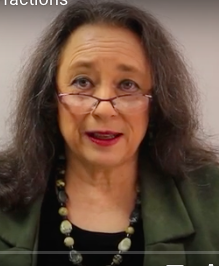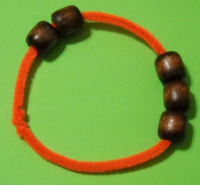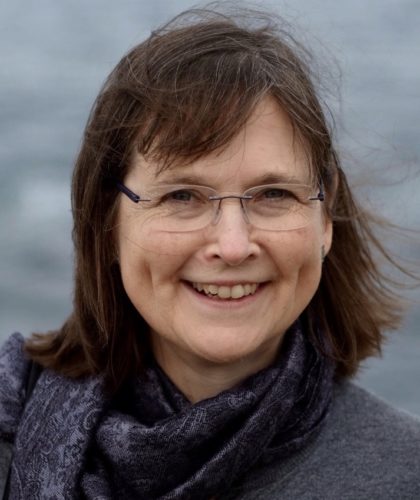Multisensory Math explained by Marilyn Zecher: Excellent video

By Kathy Kuhl If you’ve heard me speak on teaching math to kids with learning challenges, you know I recommend the multisensory math strategies developed by Marilyn Zecher of the Atlantic Seaboard Dyslexia Training Center. Some of my best ideas for teaching math lessons grew out of projects I created while taking her classes. Here’s a rare chance to hear from her yourself, without paying tuition.
Watch at least the first ten minutes
This video was supposed to be taken down. So please at least watch the first ten minutes after the 2-minute introduction for a taste of the approach.
Here’s a chance to get a few highlights of the multisensory math approach and practical tips from her yourself. This presentation quickly introduces basic concepts and techniques. It’s a highlights reel from the 30-hour course.
What is Multisensory Math?
- It’s not a curriculum. It’s a way to teach that can be used with any curriculum.
- It takes the Multisensory Structured Language (MSL) approach that Sam Orton and Anna Gillingham developed to teach dyslexics how to read (also called an Orton-Gillingham approach) and applied it to the teaching of basic math concepts. So it shares some strategies with MSL.
First tips from this video
“From the research from the fMRI studies (Functional MRI brain scan studies) we found out that the human brain, even preverbal infants, can recognized up to 4 items without counting. Anything over 4 has to be in a pattern” or else we have to count.
If more than four items are not in a pattern, “your brain wants to make a pattern, or you have to count.”
(That’s why teaching our kids to recognize dice patterns, tally marks, and other common patterns is so powerful. Marilyn explains how to use these patterns to teach math facts and build numeracy, or a sense of number, so our kids can make progress in math.)
“Counting is inefficient.” So Marilyn recommends strategies to teach math facts, rather than methods that replace addition with counting.
She also explains why flash cards are torture for some kids.
And that’s all just in the first eleven minutes of this 78-minute video.
Multisensory Math Courses with Marilyn Zecher
I’ve taken both Multisensory Math I and II, a total of 60 hours of instruction with Marilyn. I was a good math teacher before, but this work transformed how I teach all kids math. I think it should be required for teacher certification. I wish every homeschooler whose child struggles with math would take at least Multisensory Math I. (It’s offered online.)
I receive no benefit for telling you about these resources. I just don’t want you to miss them if you know anyone who struggles with math.
You can also see shorter videos of Marilyn in action here on Youtube at these links. But they are much shorter and don’t explain as thoroughly:

- Teaching fractions
- Math tracking (based on phoneme tracking exercise), a tool to help you from teaching basic numeracy to algebra
Get trained to teach Multisensory Math
You can learn more about taking these courses online or in person here. ASDEC is very homeschool-friendly, and would be delighted to train more homeschooling parents.
Marilyn’s website has a few videos, but she focuses on writing and teaching, not on updating this website.
Her Facebook page has videos and ideas.
For those living in the Washington DC area, ASDEC summer math camps and other summer kids programs can help your child make great strides.


I have just listened to part of the video so far, but I am really struck by this quote from the presentation: “Stop telling children to put dots on numbers, you are actually creating an impediment to them learning their math facts. Counting is inefficient.” My son was taught Touch Math in school, and it was a complete disaster for him. When I took him out of school in 7th grade, he couldn’t tell me what two plus two was without counting the dots on the numbers. It took me awhile to find it, but we are currently using a multisensory math program (Rightstart) that uses a lot of the principles discussed in the video. It still makes me angry that I had to remove him from the school system and research this on my own. We moved when he was three so that he could be in one of the most well-regarded school districts in our area. I worry about all the other kids being taught with poor methods, but at least I am making a different for my son now.
Debbie, thanks for writing. I’m sorry your son had that poor experience. I agree with you and Marilyn regarding math programs that replace teaching addition with counting dots. There are so many ways to teach addition facts I’ve learned from Marilyn that are better than standard practice for some of our kids. The dot-counting approach can be a helpful last resort for those cognitively incapable of adding, but we’re too quick to switch to it.
~ Am just respectfully submitting that Samuel Orton’s colleague was Anna Gillingham, rather than Lillian Gillingham. Thank you.
Thank you, Gabrielle. You are right. I’ll correct the post.